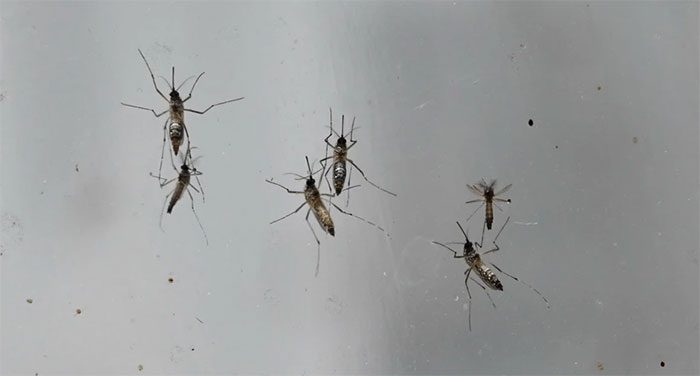Scientists from the Kenya Medical Research Institute (KEMRI) and partners from the Wellcome Trust Sanger Institute (UK) have discovered for the first time a dangerous West African mosquito species capable of transmitting malaria.
This discovery is particularly significant as the scientifically named Anopheles coluzzii mosquito harbors high-virulence viruses, can survive in extremely arid conditions, and thrives in both rural and urban environments.

This mosquito may have contributed to the spread of malaria in Turkana. (Illustrative image. AFP/TTXVN)
The Anopheles coluzzii mosquito has been confirmed to be present in the Turkana region (Northwestern Kenya) – where the Asian mosquito Anopheles stephensi was discovered three years ago.
According to scientists, this mosquito may have contributed to the spread of malaria in Turkana, and current disease control measures appear to be ineffective against this mosquito species.
Genomic sequencing results of mosquitoes collected from five malaria epidemiology regions in Kenya since 2006 show that Anopheles coluzzii has been present in Turkana at all sampling stages.
Notably, researchers also found a high mutation frequency associated with insecticide resistance, particularly to DDT and pyrethroids in the vector population in Kenya.
According to scientists, these mutations confer stronger pyrethroid resistance, which may reduce the effectiveness of insecticide-treated nets – considered one of the most effective protective measures against resistant vector populations.
Samples of mosquitoes from Turkana were collected at the Kakuma refugee camp – a densely populated area with low local transmission rates, but recently has experienced a resurgence of malaria outbreaks. This area has historically received little focus in malaria control due to its climate, which was thought to be unsuitable for known vector species, except for Anopheles arabiensis – a mosquito with low transmission efficiency. Therefore, researchers suggest that the West African mosquito is indeed responsible for the recent malaria outbreaks in Turkana.
Researchers state that the discovery of both Anopheles coluzzii and Anopheles stephensi in Turkana and other regions of Northern Kenya highlights the urgent need to reassess the distribution, ecology, and epidemiological significance of vector populations in Kenya.
In Kenya, approximately 70% of the population is at risk of malaria, which accounts for about 13-15% of outpatient visits. Reports indicate that malaria claims around 10,000 Kenyan lives each year.


















































